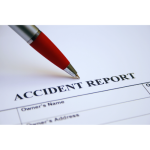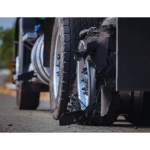While not as frequent as other areas of Florida, Naples still experiences car accidents throughout the area. The Naples Police Department (NPD) reported a total of 994 car crashes in 2023, as stated in an article written by Naples Daily News. The leading causes of these car accidents were identified as careless driving, following too closely, and failing to yield while approaching or entering an intersection. Such accidents, even the minor fender benders that were reported, frequently result in injuries such as contusions, abrasions, and lacerations, which highlights the fact that even seemingly minor accidents can result in injuries.
Many people don’t give much thought to the simple contusions, abrasions, and lacerations they have sustained in a Naples car accident. However, these injuries can still cause significant pain, inconvenience, and may also indicate other soft tissue injuries that may require medical care. Left unchecked, what seems like a minor injury, including cuts and bruises, could worsen, potentially leading to deeper tissue damage or complications like compartment syndrome, which can increase pain and prolong the recovery process. Therefore, it is crucial to seek medical attention as well as a car accident lawyer in Naples, even for seemingly minor injuries to ensure proper treatment and compensation for your injuries.
In some cases, injuries from a car accident can be far more severe than bruises or cuts. For instance, fractures such as bimalleolar fractures, which affect both bones of the ankle, are not uncommon. Victims often face significant medical expenses, lengthy recovery periods, and loss of income. Understanding the bimalleolar fracture settlement value in such cases can help injured parties seek appropriate compensation, covering their medical bills, therapy, and other related losses.
Similarly, severe ankle fractures like trimalleolar ankle fractures—involving breaks in all three bones of the ankle—require extensive medical treatment and prolonged recovery. Victims of such injuries may want to explore trimalleolar ankle fracture settlements to ensure they receive adequate compensation for their pain, suffering, and financial losses.
Contusion Vs. Abrasion Vs. Laceration
People often mistakenly believe that contusions, abrasions, and lacerations are interchangeable terms for minor injuries after being in a Naples car accident, but they actually refer to distinct types of injuries. Understanding these differences is important for accurate diagnosis, appropriate treatment in medical contexts, as well as receiving compensation for these injuries.
Contusions
A contusion, which is commonly known as a bruise, occurs when the body sustains a direct impact or blow but does not break the skin. This injury causes small blood vessels beneath the skin to break or rupture, leading to blood pooling under the skin’s surface. Bruises can appear as discolorations ranging from blue to purple, and even yellow-green when they are healing. They may be tender or painful to touch as well. While many contusions will heal on their own with time, more severe cases, especially after impacts that may cause internal bleeding or affect vital organs, require immediate medical attention.
In car accidents, contusions often result from forceful contact with seat belts, steering wheels, or airbags. These safety features, while they are important for minimizing more serious injuries or even fatalities, can cause significant bruising due to the force of the collision. Slips, falls, and sports injuries are also common scenarios where contusions may develop afterward.
To diagnose a contusion, a medical provider will conduct a physical examination after an accident to assess the location and severity of the bruising. Depending on the circumstances, imaging tests such as X-rays, CT scans, or MRIs may be necessary to rule out fractures or internal bleeding. Prompt medical evaluation is very important after a car accident to ensure that any potential complications that might accompany contusions, such as deeper tissue damage or internal bleeding, are promptly identified and treated as they could be life-threatening. Seeking medical care, along with the assistance of a personal injury lawyer, helps mitigate risks associated with contusions and ensures your rights are upheld during your recovery.
Abrasions
Abrasions are skin injuries caused by friction against a rough surface during a car accident, such as asphalt or glass. This friction often results in the scraping away of the top layers of skin, and is commonly known as “road rash” or “grazes.” They often occur during car accidents when individuals come into contact with abrasive surfaces. For example, a scrape on the knee from sliding on pavement, or their cloth car seat forcefully is a typical abrasion. These injuries are characterized by superficial borders and are generally not as deep as lacerations, though they are still considered to be quite painful due to exposed nerve endings in the damaged skin, especially when they span over a significant portion of the body.
Treatment for abrasions sustained in a car accident in Naples involves seeking medical attention so they can begin cleaning the wound thoroughly to remove any embedded debris, which is important to reduce the risk of infection. Depending on the severity of the abrasion, this may require gentle washing with soap and water or saline solution. Applying an antibiotic ointment and covering the abrasion with a sterile bandage can also help protect it as it heals. It’s important to monitor for signs of infection, such as:
- Increasing redness
- Swelling
- The presence of foul-smelling drainage
If signs of infection develop or the wound does not show signs of healing within a few weeks, you should speak to your doctor to prevent further complications.
Lacerations
Laceration injuries in car accidents can vary in severity and location on the body, affecting not just the skin but potentially penetrating through muscles and organs, which is considered a serious injury. Sometimes lacerations require immediate surgical intervention in order to repair the damage. Here are several types of lacerations commonly sustained in such incidents:
- Cuts – These are the most common type of laceration, occurring when a sharp object, like broken glass or plastic, slices the body during an accident, which then breaks through the skin.
- Over-stretching – These types of lacerations happen when the skin is stretched to its limits and tears open due to a forceful impact, such as when an object strikes the body at an angle.
- Split Laceration – When two objects push together in a car accident and crush part of the body simultaneously, the skin can tear under the immense pressure, which is known as a split laceration.
When car accidents occur in Naples, various factors can cause lacerations. Broken glass remains a prominent hazard despite modern safety improvements, and it is capable of causing severe cuts. Additionally, torn parts of the vehicle such as body panels and frame pieces can create sharp edges that, upon impact, may seriously bruise or tear the skin, leading to bleeding and painful wounds.
While some lacerations may be minor and treatable at the accident scene with basic first aid, severe lacerations will require immediate medical attention to prevent shock and serious infection. Treatment may even involve:
- Blood transfusions to replace lost blood volume
- Stitches to close the wound and promote healing
- Emergency tetanus prophylaxis to prevent bacterial infections
For these reasons, prompt medical care is essential in managing lacerations to minimize complications and facilitate recovery, as is seeking the assistance of a car accident lawyer to retrieve compensation for these injuries.




